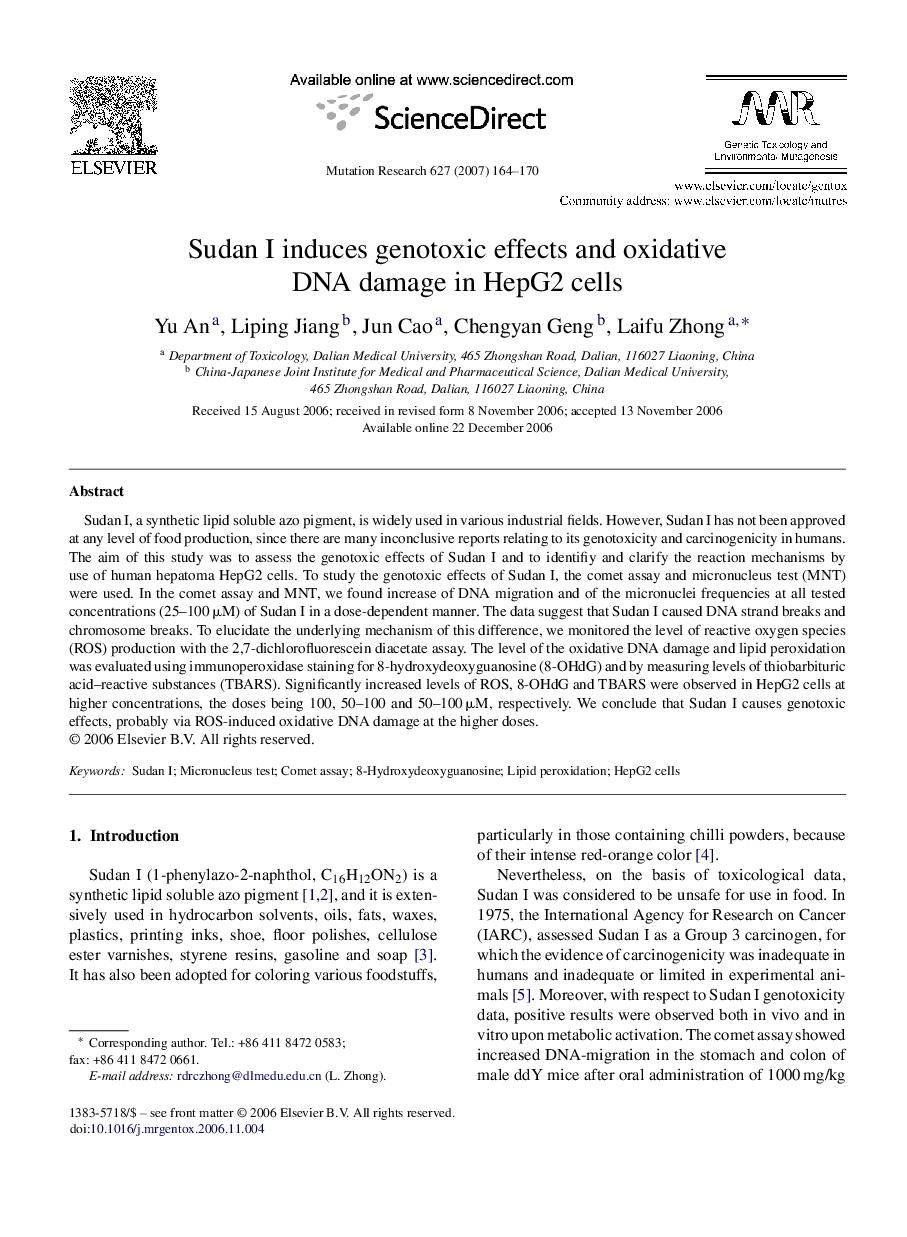| Article ID | Journal | Published Year | Pages | File Type |
|---|---|---|---|---|
| 2149238 | Mutation Research/Genetic Toxicology and Environmental Mutagenesis | 2007 | 7 Pages |
Sudan I, a synthetic lipid soluble azo pigment, is widely used in various industrial fields. However, Sudan I has not been approved at any level of food production, since there are many inconclusive reports relating to its genotoxicity and carcinogenicity in humans. The aim of this study was to assess the genotoxic effects of Sudan I and to identifiy and clarify the reaction mechanisms by use of human hepatoma HepG2 cells. To study the genotoxic effects of Sudan I, the comet assay and micronucleus test (MNT) were used. In the comet assay and MNT, we found increase of DNA migration and of the micronuclei frequencies at all tested concentrations (25–100 μM) of Sudan I in a dose-dependent manner. The data suggest that Sudan I caused DNA strand breaks and chromosome breaks. To elucidate the underlying mechanism of this difference, we monitored the level of reactive oxygen species (ROS) production with the 2,7-dichlorofluorescein diacetate assay. The level of the oxidative DNA damage and lipid peroxidation was evaluated using immunoperoxidase staining for 8-hydroxydeoxyguanosine (8-OHdG) and by measuring levels of thiobarbituric acid–reactive substances (TBARS). Significantly increased levels of ROS, 8-OHdG and TBARS were observed in HepG2 cells at higher concentrations, the doses being 100, 50–100 and 50–100 μM, respectively. We conclude that Sudan I causes genotoxic effects, probably via ROS-induced oxidative DNA damage at the higher doses.
